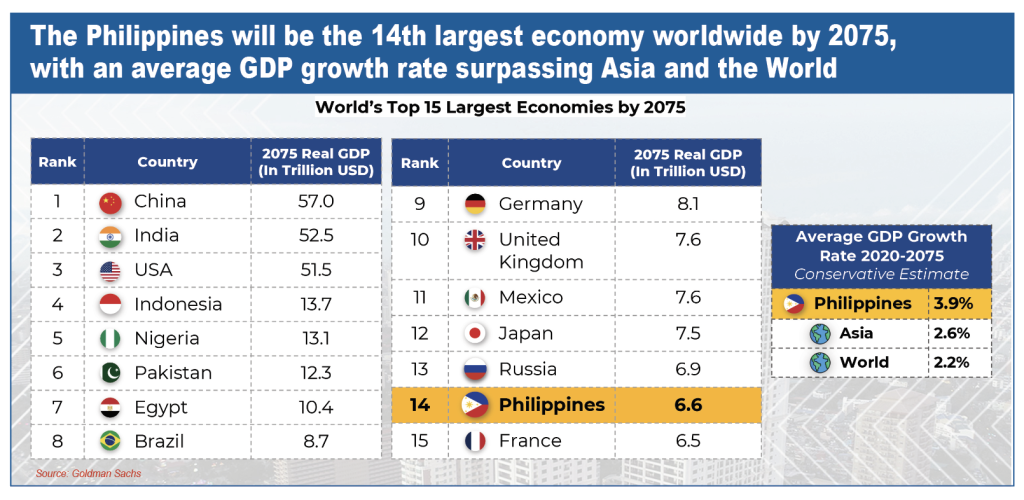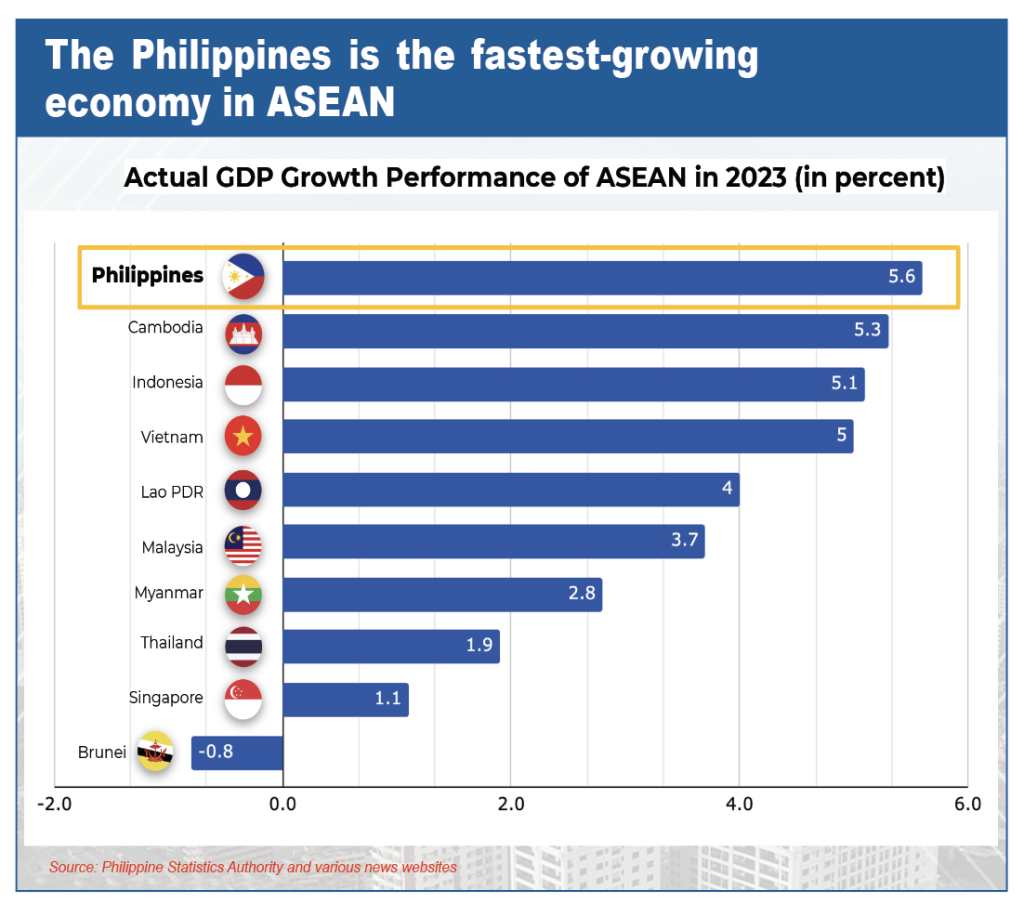
By Ralph G. Recto
Secretary of Finance
(Keynote speech during the Manila Overseas Press Club “Finance Night”, Fairmont Hotel, Makati, March 20, 2024)
Mr. Tony Lopez, Chairman of the Metro Manila Overseas Press Club; distinguished guests; friends in the media: good evening.
Thank you for the opportunity to share with you the promising prospects of the Philippine economy and how we intend to turn this optimism into a daily reality for every Filipino.
As members of the press, your job goes beyond just reporting the numbers. You are the guardians of context and perspective. You shape how our people understand the world around them.
The DOF’s task of maintaining fiscal stability often involves wading through complex statistics and jargon and making decisions that might not always be popular. But that is only because the public fails to fully appreciate the rationale and long-term gains of doing them.
Thus, the DOF counts on your expertise to convey, in comprehensible terms, the strategies and initiatives we are implementing to establish strong foundations for sustained long-term growth.
I hope tonight’s gathering will help advance our common crusade to widen the base of economic literacy among our people.
To start off, we do find ourselves today amidst much uncertainty.

Wars
Two ongoing hot wars and a trade war are causing geopolitical tensions and putting pressure on the global economy, which is already struggling with high inflation and interest rates, imbalanced trade deficits, and higher fiscal deficits globally.
But while global prospects remain clouded with uncertainties, there is one area of consensus among economists: Asia’s economic powerhouses, particularly the Philippines, are set to lead growth over the next decades.
International research firms attest to this, projecting the Philippines join the ranks of the world’s top 20 largest economies by mid-century.
Fast forward to 2075, Goldman Sachs’ forecast positions the Philippines as the 14th largest economy globally, outpacing France.
These are indeed a strong vote of confidence in our ability to orchestrate a rapid economic expansion in the years to come.
Thus, we will do our best to achieve or even surpass these forecasts via a set of growth-enhancing strategies.
First, we will continue to bolster our macroeconomic strength through prudent fiscal management.
Today, we are the fastest-growing economy in the ASEAN region, expanding by 5.6% in 2023. This demonstrates our continued strength, stability, and resilience in adverse conditions.
Multilateral organizations validate the vigor of our economy, expecting us to be a frontrunner in ASEAN with a projected GDP growth of 5.8% to 6.3% in 2024.
Our growth trajectory has been fueled by sustained domestic consumption, which is proving to be a robust shield against external factors contributing to the global economic slowdown.
This strong consumer spending, which continues to account for more than 70% of the economy, is being supported by a vibrant labor market.
Filipinos engaged in formal and stable work continue to represent the largest portion of the workforce in the country. This is an indication of a strong and growing middle class.
The robust remittance inflows from our overseas Filipino workforce also sustain domestic consumer demand.
The strong rebound of the tourism industry as reflected by the rising tourism receipts as well as the hefty BPO export revenues give us confidence that we have ample buffers against external headwinds.
These, along with our low external debt and healthy reserves that exceed standard benchmarks, should keep our currency stable and resilient to adverse external shocks.
Our growth is further bolstered by an inflation rate that is well under control, with February’s 3.4% comfortably falling within the government’s target band of 2 to 4%.
Our comprehensive Reduce Emerging Inflation Now or REIN plan will ensure that inflation remains within our target range.
In the immediate term, the plan involves proactively preparing the country to mitigate the effects of El Niño on inflation through strengthening agricultural production to ensure food security.
Meanwhile, our efforts to exercise fiscal discipline have resulted in a much stronger fiscal house.
In 2023, our fiscal deficit continued to narrow down to 6.2% of GDP from its peak of 8.6% at the height of the pandemic.
This narrowing deficit path is attributed to the consistently higher government revenue collec-tions and improved expenditure management.
As of January of this year, the national government posted a larger budget surplus of P88 billion, 92.25% higher than last year.
The fiscal outturn was brought about by a faster 21.15% year-on-year increase in revenues, reaching P421.8 billion.
The robust revenue collection outpaced the 10.39% expansion in government spending, which sped up to P333.9 billion.
This means we are well above the target of collecting P11.7 billion a day to support our average daily spending of P15.8 billion.
The significant reduction of the deficit signifies ongoing stabilization of our debt.
In 2023, our debt-to-GDP ratio further dropped to 60.2% from the peak of 60.9% in 2022.
We are currently reviewing the Medium-Term Fiscal Framework to ensure that our targets reflect realities globally and domestically and that we pursue a growth-enhancing fiscal consolidation.
Meanwhile, our high credit ratings summarize all our efforts to maintain fiscal discipline. This is a strong vote of confidence in our sound economic policies and a big win for ordinary Filipinos as it translates to more accessible financing for the government’s development programs.
This will allow us to channel funds that would have otherwise been allotted for interest payments towards more infrastructure projects, improved social services, a better healthcare system, and quality education.
To fund the increasing needs of our people, we will focus on growing our revenues further by plugging tax leaks, improving tax administration—a process that will take some time, and preventing wasteful expenditures.
The Bureau of Internal Revenue and the Bureau of Customs are accelerating their respective digitalization initiatives to enhance tax administration efficiency and ease the payment of taxes.
Through the implementation of the Ease of Paying Taxes Act, processes are already streamlined and taxpayers can now file and pay their taxes electronically anywhere in the country.
Alongside these initiatives, five tax reform measures are underway to improve revenue mobilization, further sharpen our fiscal toolkit, and modernize the Philippine tax system.
The revenue measures we have sent to Congress maximize our gains and institute fairness and fiscal consolidation.
You, our journalists, are the evangelists of modern economic thinking. We can only push the reforms only as far as our citizens grasp the strategic significance of what we are trying to do.
So, I look forward to working with you in helping us build public support for these measures.
These reforms will play a crucial role in realizing another strategic objective: directing our accelerated spending program towards infrastructure and human capital development.
These reforms are two investment areas that will provide the highest returns in the short term and into the future.
Our greatest competitive advantage rests in our people. With an average age of 25, we are harnessing the energy and talent of millions of young and well-educated Filipinos by investing heavily in education and social services.
In fact, the biggest chunk, or about 37%, of the 5.767 trillion peso-2024 national budget was allocated to education, health, and social protection programs, including ayuda to at least 12 million poor and low-income families.
Meanwhile, the government is investing in training programs that hone digital skills and critical thinking. This will fully equip Filipinos to adapt to new technologies and innovative solutions.

Build Better More
We are also running full speed ahead of the President’s Build Better More program to create more jobs that stimulate domestic consumption while boosting our competitiveness.
This ambitious infrastructure build-up will entail annual spending as a share of GDP of up to 6%, driven by our 185 big-ticket projects worth 9.14 trillion pesos.
We have taken great care to ensure the economic returns on our major projects, choose the most highly concessional financing available, and diversify our sources of project funding.
The success of the NAIA PPP Project–our largest to date and the quickest approved ever–highlights our focus on PPPs to accelerate the delivery of much-needed infrastructure development.
Cagayan de Oro airport
We are rolling out major projects across the archipelago to fuel growth in the countryside, beginning with the Laguindingan Airport PPP Project in Northern Mindanao. Our goal is to make this a model for other regional airports to disperse economic activity to every island. For inclusive economy can only be achieved when growth reaches every corner of the country.
Our strategy for expansion is further powered by reforms that will drive investment-led growth benefitting all Filipinos.
We will boost investments by reducing the cost of doing business, improving the regulatory regime, and ending constraints.
In the words of the President, replacing red tape with a red carpet, but, if I may add, without sweeping the unsavory under the rug or trampling rights and rules.
On the DOF’s part, we are amending the CREATE Act to make the country’s tax regime competitive.
Under the proposed changes, income tax rates will be 20% for domestic and resident foreign corporations elected to be under the enhanced deductions regime and it will simplify the VAT regime, among others.
We expect this to be a game-changing measure to improve the business environment in the Philippines, attract investments, and create more quality jobs for our people.
In sum, we are doing all of these to achieve the most important number—cutting poverty incidence to single digits, or 8 to 9% by 2028. This means lifting 14 million Filipinos out of poverty.
We do not intend to fail in meeting this crucial target. As this is the key indicator that our growth has translated into real improvements in the lives of ordinary Filipinos through more and better jobs, higher levels of education, and healthier lives.
I hope, in this speech, to infect you with our pervasive confidence in our economic future. I urge you to communicate the complete picture of our economic story and the reasons behind our optimism.
The Marcos, Jr. administration is building an economy that will allow Filipinos’ many talents to blossom.
It is an economy that all our people rightfully deserve, that results in comfortable lives, and that secures the future of the next generation of Filipinos. This is the promise of Bagong Pilipinas.
Thank you.
